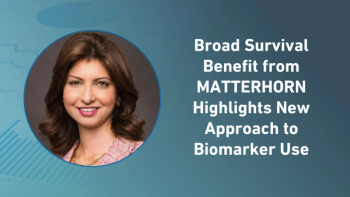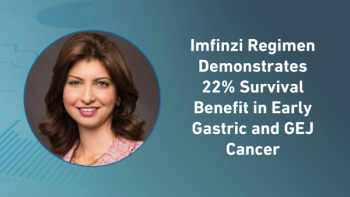
- Applied Clinical Trials-09-01-2018
- Volume 27
- Issue 9
Clinical Trials In a Dish: A Revolution Begins
The emergence of CTiD offers the potential to remove future clinical failures much earlier in the process-and pave way for gains in R&D productivity.
While it is well known in the pharmaceutical industry that approximately 90% of drugs fail the clinical trial process, few have focused on the underlying driver of the high failure rate-because until now, nothing could (ethically) be done about it. Specifically, every person responds uniquely to every drug, with respect to both toxicity and efficacy, but preclinical testing, (including in vitro and in vivo animal assays) is currently engineered exclusively at determining a drug’s effects on the average human, not on examining the distribution of impact across a target population. There has simply been no platform for testing a drug’s impact on a human population prior to actual clinical trials.
But times are quickly changing via a new process, termed Clinical Trials in a Dish (CTiD). In the past 18 months, a number of published academic studies1-5 have demonstrated that, when a scientist extracts a tissue sample from a specific human donor, converts it into a stem cell, and then differentiates that stem cell into either a heart cell (cardiomyocyte) or a liver cell (hepatocyte), the resulting cell is not simply a generic person’s cell. Rather, that cell responds to drugs in the same way as that specific donor’s actual heart or liver responds. This discovery enables researchers to conduct CTiD, using cells derived from cohorts of humans that are representative cross samples of target populations. CTiD can show, in vitro, the distribution of incidence and severity of toxicity that a candidate compound will likely display, in vivo, when exposed to humans during clinical trials. This enables pharmaceutical companies to terminate, very early in the development process, compounds that look safe when treating an average person but are unsafe for a portion of the population.
Importantly, CTiD are no longer just a theoretical possibility. In January of this year, Coyne Scientific began offering preclinical toxicity testing services utilizing a commercial application platform that uses a panel of donors selected to mirror the U.S. population. The company is nearing a completion of a joint development project with a large pharma company, the results of which will be published later this year. In addition, it is preparing for similar joint projects with two other big pharma organizations and is in discussions with still more.
Eliminating doomed candidates
How will CTiD change drug development? While it’s tempting to conjure visions of a utopian time when animal trials and even human clinical trials are no longer required, such changes are years, perhaps decades, away. However, as a recent article in SLAS Discovery points out6, CTiD can radically affect drug development immediately, without any changes in FDA regulations.
First to be affected will be preclinical toxicity testing. As pointed out, removing future clinical failures from the pipeline much earlier in the process can lead to significant improvements in R&D productivity. Cardiotoxicity is being addressed first but given the above referenced findings in scientific literature, hepatotoxicity should be addressable within a few years. After that, neurotoxicity and developmental toxicity will follow. Together, these four sources account for over 70% of toxicity-related clinical trial failures-which translates to nearly 30% of all failures. Eliminating the doomed candidate drugs much earlier in the process and focusing on the remaining 70% of candidates demonstrating a higher likelihood of clinical success, could improve the industry’s R&D productivity by as much as 40% in the coming years. Some of that value may be strictly monetary, such as avoiding paying per-patient fees and expenses associated with clinical trials that are destined to fail. But even more value can be realized by redeploying resources away from those compounds to those that may still prove beneficial, thus directly improving R&D productivity.
In time, CTiD will also be used for efficacy testing against cohorts of stem cell-derived tissues from diseased patients to determine those patient cohorts that may benefit from a candidate drug. Such tests will take more time to pervade the various therapeutic classes, because they require the ability to create the specific tissues to be targeted by a drug (and science has not yet developed the ability to differentiate stem cells into every type of tissue), and the tests must be specific to each class of remedy. But scientists are already using cardiomyocytes from diseased patients in efficacy testing7,8-and the leap from single-donor testing to cohort testing should not be far behind.
As soon as large pharma companies become comfortable with CTiD as part of the normal development funnel for their internal drug candidates, they can be expected to also consider such tests as part of the review package used when considering in-licensing of compounds from smaller developers. Today, the safety packages from smaller firms often contain limited information about the safety and toxicity profiles of the drugs, leaving the risk to the acquirer. Given that CTiD can be carried out in a few weeks, the acquirer can feasibly request such tests as part of any due diligence process. This shifts the risk of failure to the seller-with potentially profound impact on the entire ecosystem of the venture capital-backed, small-company drug discovery and development industry.
Looking more broadly, CTiD, when compared to actual clinical trials, possess the twin virtues of avoiding risk to living humans and also being far less expensive to conduct. This opens the doors to testing certain vulnerable populations, as well as populations for whom clinical trials are simply economically infeasible. For example, over half of many new drugs are consumed by geriatric patients (who often have different responses than younger adults), but this population segment is generally excluded from clinical trials due to problems with comorbidity, communications, compliance, transportation issues, etc. Comparative CTiD (comparing cohorts of older versus younger adults) could help answer the question, “Are geriatric patients at a higher risk of adverse events with this drug when compared to the population that was recruited for clinical trials?” And thus potentially avoid the cost, risk, and feasibility issues of a geriatric-specific clinical trial. The same concept could be applied to pediatric testing, or to provide predictions for bridging studies (e.g., the entry of a U.S.-approved drug into Japan) prior to incurring the expense of the actual clinical bridging studies.
Finally, consider the role CTiD could play in preventing adverse drug-drug interactions (DDIs). DDIs are difficult to study in the clinic, because (1) there are too many compounds that might regularly be coprescribed with the compound of interest to test them all individually, much less in multi-drug combinations; (2) there are ethical concerns with exposing patients to multiple drugs simultaneously, when each of the drugs has been individually shown to be potentially toxic; (3) each volunteer’s usefulness is exhausted after a single combination of doses, whereas DDIs must be understood across every combination of therapeutic doses of the multiple drugs that might be prescribed; and (4) given that every person responds differently to each drug separately, we must expect that DDIs also vary widely across a population-so testing a small number of people at any one-dose combination does not provide an adequate understanding of the potential effects in a population. These problems simply cannot be overcome in a clinical trial setting-but they can be overcome through CTiD.
In the long run, it’s likely that sufficient evidence will be compiled regarding the effectiveness of CTiD at predicting the toxic or beneficial effects of compounds in the clinic that this new tool can begin displacing animal testing (and even, eventually, early clinical trials). But the initiation of a revolution in drug development does not depend on such long-run outcomes-in fact, the revolution has already begun.
References
- Burridge, P. W.; Li, Y. F.; Matsa, E.; et al. Human Induced Pluripotent Stem Cell–derived Cardiomyocytes Recapitulate the Predilection of Breast Cancer Patients to Doxorubicin-Induced Cardiotoxicity. Nat. Med. 2016, 22, 547-556.
- Stillitano, F.; Hansen, J.; Kong, C.-W.; et al. Modeling Susceptibility to Drug-Induced Long QT with a Panel of Subject-Specific Induced Pluripotent Stem Cells. Elife. 2017, 6, 1–24.
- Shinozawa, T.; Nakamura, K.; Shoji, M.; et al. Recapitulation of Clinical Individual Susceptibility to Drug-Induced QT Prolongation in Healthy Subjects Using IPSC-Derived Cardiomyocytes. Stem Cell Reports. 2017, 8 (2), 226–234.
- Matsa, E.; Burridge, P. W.; Yu, K. H.; et al. Transcriptome Profiling of Patient-Specific Human IPSC-Cardiomyocytes Predicts Individual Drug Safety and Efficacy Responses In Vitro. Cell Stem Cell. 2016, 19 (3), 311–325.
- Choudhury, Y.; Toh, Y. C.; Xing, J.; et al. Patient-Specific Hepatocyte-like Cells Derived from Induced Pluripotent Stem Cells Model Pazopanib-Mediated Hepatotoxicity. Sci. Rep. 2017, 7, 41238.
- Available online at: http://journals.sagepub.com/doi/full/10.1177/2472555218775028.
- Sun, N.; Yazawa, M.; Liu, J.; et al. Patient-Specific Induced Pluripotent Stem Cells as a Model for Familial Dilated Cardiomyopathy. Sci. Transl. Med. 2012, 4 (130).
- Liang, P.; Sallam, K.; Wu, H.; et al. Patient-Specific and Genome-Edited Induced Pluripotent Stem Cell–Derived Cardiomyocytes Elucidate Single-Cell Phenotype of Brugada Syndrome. J. Am. Coll. Cardiol. 2016, 68 (19), 2086–2096.
Kevin P. Coyne is CEO; Shawn T. Coyne is President; and Bernard Fermini is Chief Scientific Office and VP of Safety and Toxicology Assessment, all with Coyne Scientific
Articles in this issue
about 7 years ago
Greater Gift's PopUp Star Eventabout 7 years ago
Can FDA Put Some Heat Back Under European Adaptive Pathways?about 7 years ago
Next-Generation Clinical Trialsabout 7 years ago
EU’s Status on IDMPabout 7 years ago
Applied Clinical Trials, September 2018 Issue (PDF)about 7 years ago
Ensuring High-Quality Data in Complex, In-Home Clinical Trialsabout 7 years ago
FDA Promotes Surrogate Endpoints, ‘Seamless’ Clinical Trialsabout 7 years ago
Q&A: Clinical Trials Need To Grow In RelevanceNewsletter
Stay current in clinical research with Applied Clinical Trials, providing expert insights, regulatory updates, and practical strategies for successful clinical trial design and execution.





.png)



.png)



.png)
.png)
